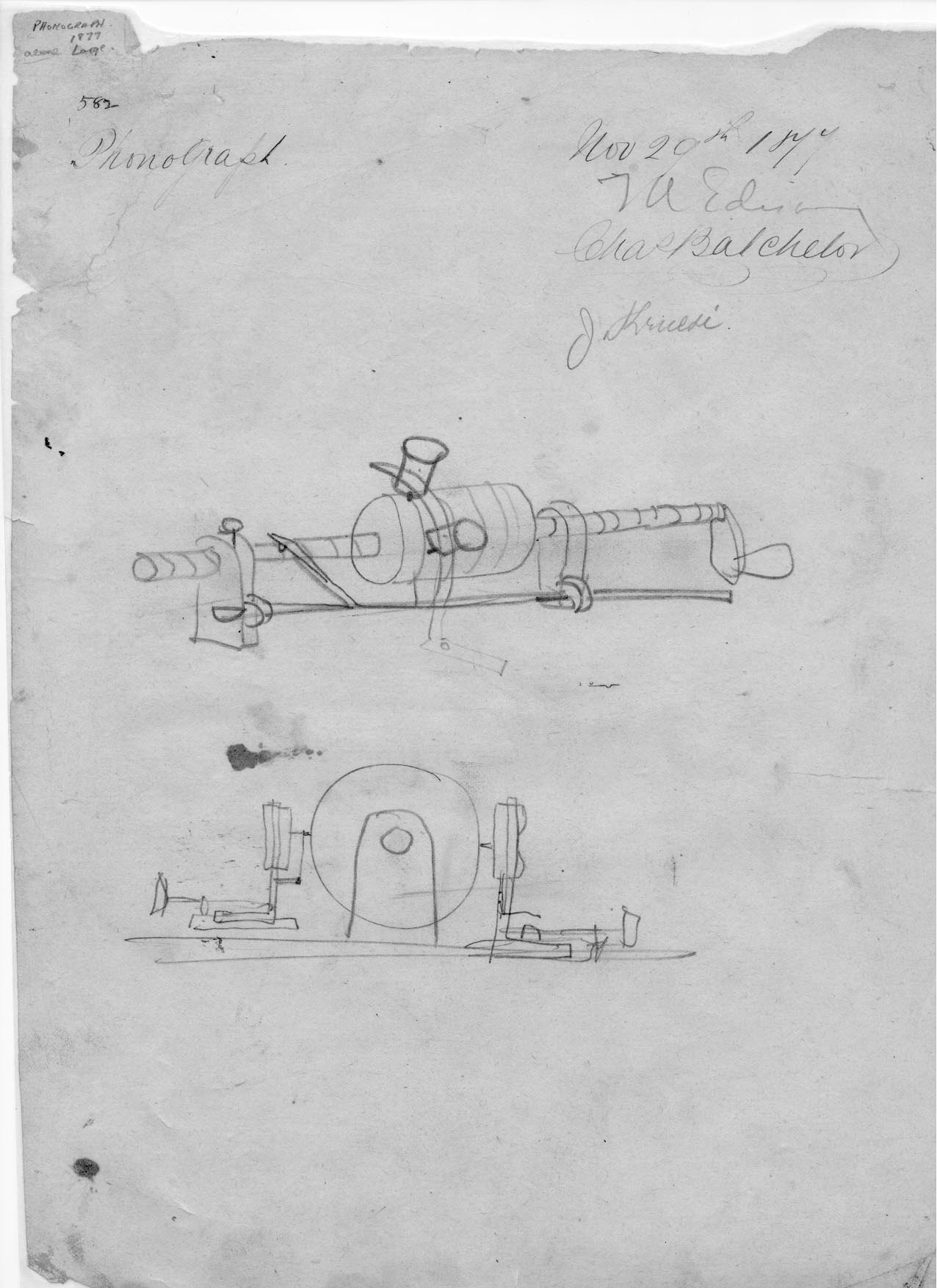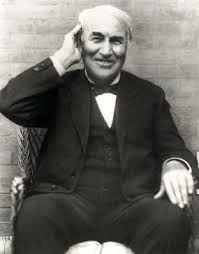Many marvel at the great inventor’s prodigious output, the breadth and depth of his patents and the great industries he is responsible for starting…recorded sound, motion pictures and the electric light/utility systems. He also made significant achievements in telegraphy, telephony, battery storage and the manufacture of cement; but his “magic” is much more important–for when these industries are replaced by other things, his true genius will still be evident and eternally relevant.
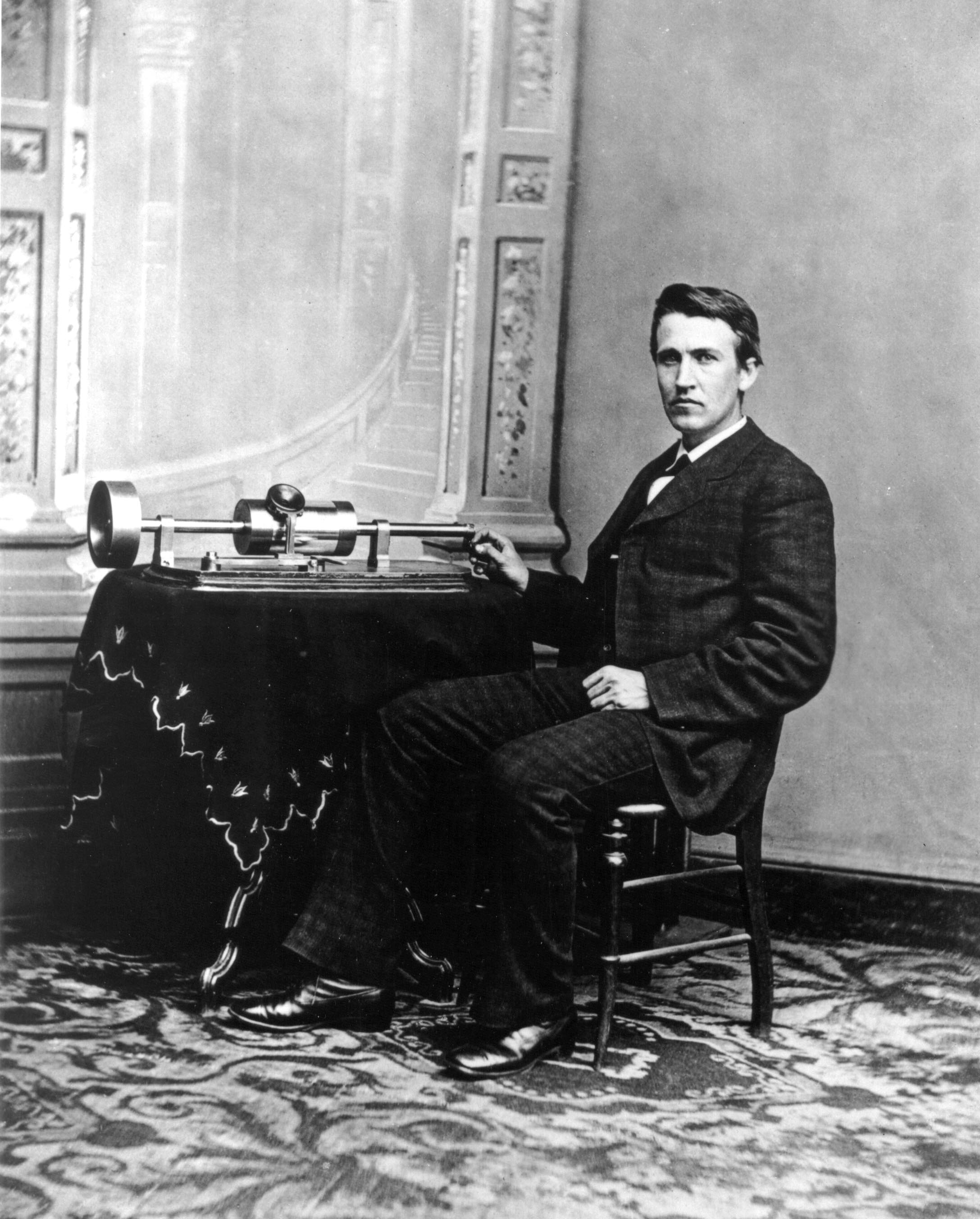
A young and proud Edison shows off his phonograph to President Rutherford B. Hayes at the White House, 1878.
Ever see a modern laboratory or research facility like at a high tech company, an academic lab on campus, or maybe you were lucky to walk the halls of the world famous Bell Labs. You notice a great similarity. Long halls with many labs and teams of researchers busy, creating the future. Each lab a world unto itself, consumed with making something happen…ideas being born into prototypes. This model derives directly from Edison’s early work at his Menlo Park labs, later super-charged at his formalized invention factory at the legendary West Orange Labs.
This first, true R&D lab he invented gave tremendous advantage over other inventors who tended to be lone wolf or independent dreamers. Using his natural leadership and management skills to create the right teams of people and expertise, Edison could explore a large number of ideas at once (typically 30-40 at a time); and could:
- Invent faster than competitors, giving him market and surprise advantage
- Take advantage of spinning off technological achievements into whole families of inventions
- Multiplex his insights and wisdom across multiple teams at once
- Develop his staff into independent inventors and project managers like himself
- Develop management and leadership styles that would suit specific situations, invention challenges and team make-up.
- Set goals and timelines so the R&D lab was constantly running at capacity and efficiency
- Maintain a centralized stock of ready materials so teams always had what they needed to create their prototypes.
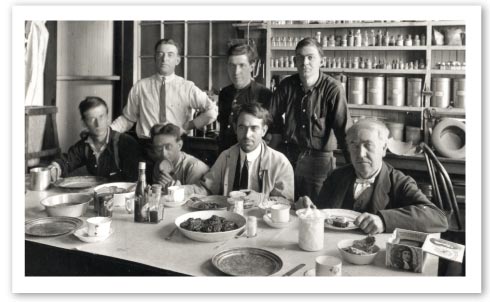
Edison knew the leadership value of working with his teams, often eating and joking with them. This was the heart of the magic of his invention factory.
Although Edison provided initial guidance and suggestions on how to approach each problem, the experimenters were often allowed, and indeed encouraged, to find their own way to a solution …
“I generally instructed them on the general idea of what I wanted carried out, and when I came across an assistant who was in any way ingenious, I sometimes refused to help him out in his experiments, telling him to see if he could not work it out himself, so as to encourage him.”
The more his stable of inventors achieved, the more responsibility they were given. His centralized library also gave inventors a huge resource of information at their disposal as well. He even set stretch goals for his teams….an minor invention every 10 days and major one every 6 months!

Like his project teams, Edison often retreated to a secluded lab of his own to explore something new.
Careful records of each experiment were kept in notebooks as a permanent record of learning was thus preserved for possible patent application filings; as well as a jumping off point for other teams to carry some line of research further or into related areas. A daily update newsletter kept by his office staff served to let Edison know every day what was happening with his project teams. Careful records of expenditures, stores drawn from the centralized stockroom and timesheets were kept for each team’s activities. We see this done today via sophisticated computerized programs, helping to determine the cost effectiveness of new product development. It would seem R&D lab operational procedures were also pioneered by Edison.
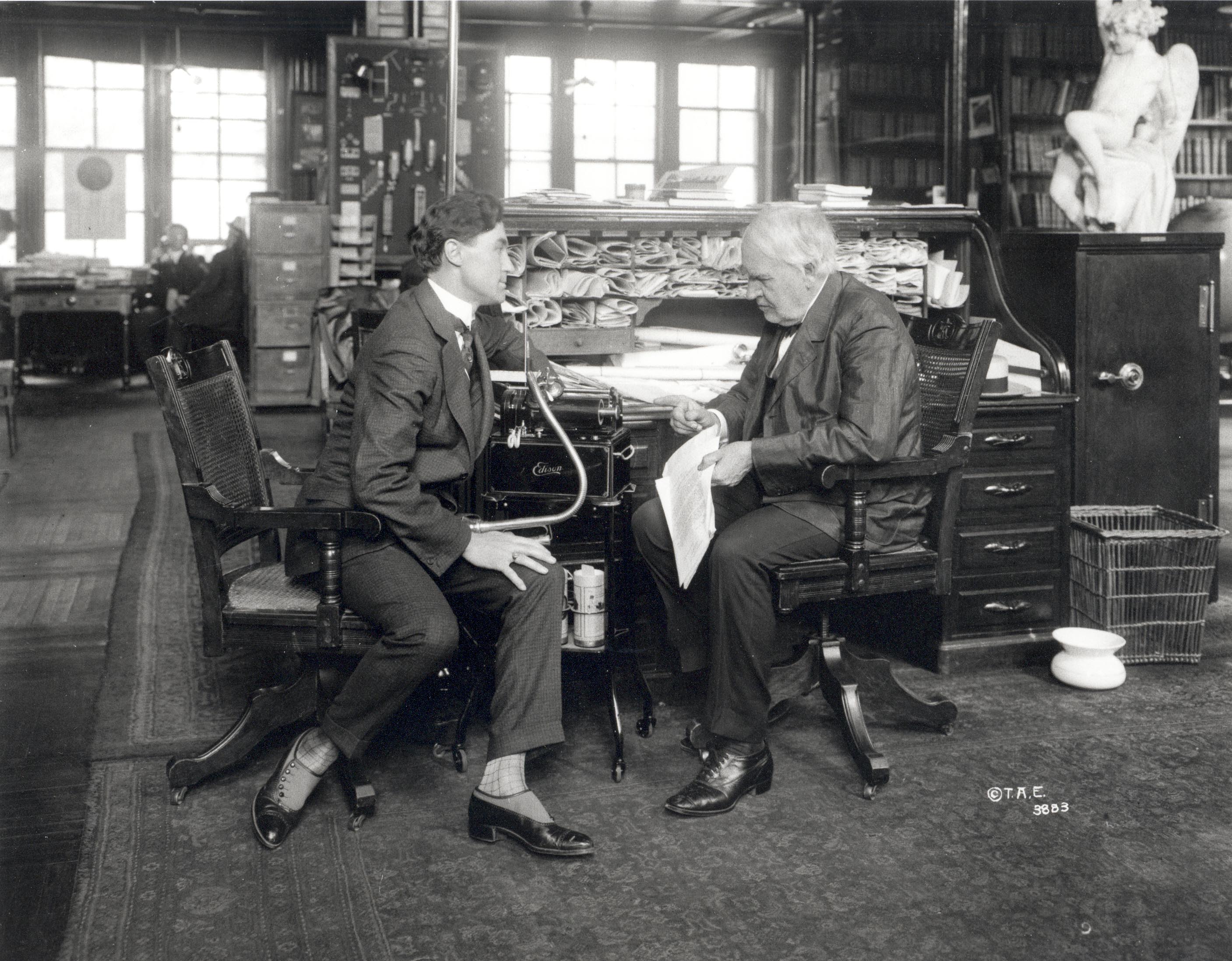
Like any good R&D organization, a capable staff keeping project managers aware of what is going on is indispensable. Here Edison confers with staff.
So powerful and advantageous was Edison’s R&D lab, that before he dies in 1931, the world’s great companies implement their own labs; and America’s business model for converting raw ideas into new ready-to-be-marketed products forms the mainstay of our team based, technology driven economy. Today, we teach this head and hands, problem solving philosophy starting in America’s middle schools. It’s called STEM or perhaps STEAM. The currently popular term “maker space” derives from all this. This year, America will spend over $500 billion on R&D in all sectors-business, government, academia.
That dear readers, is Thomas Edison’s greatest and most enduring invention/accomplishment, a process to keep our nation’s technological cornucopia always overflowing!
Thomas Edison said, “Many of life’s failures are people who did not realize how close they were to success when they gave up.”
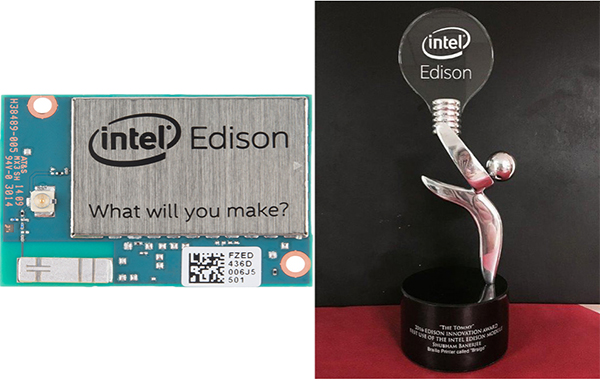
Left: Intel-Edison module now available world-wide for developers. Right: The “Tommy” award given by the Edison Innovation Foundation.



